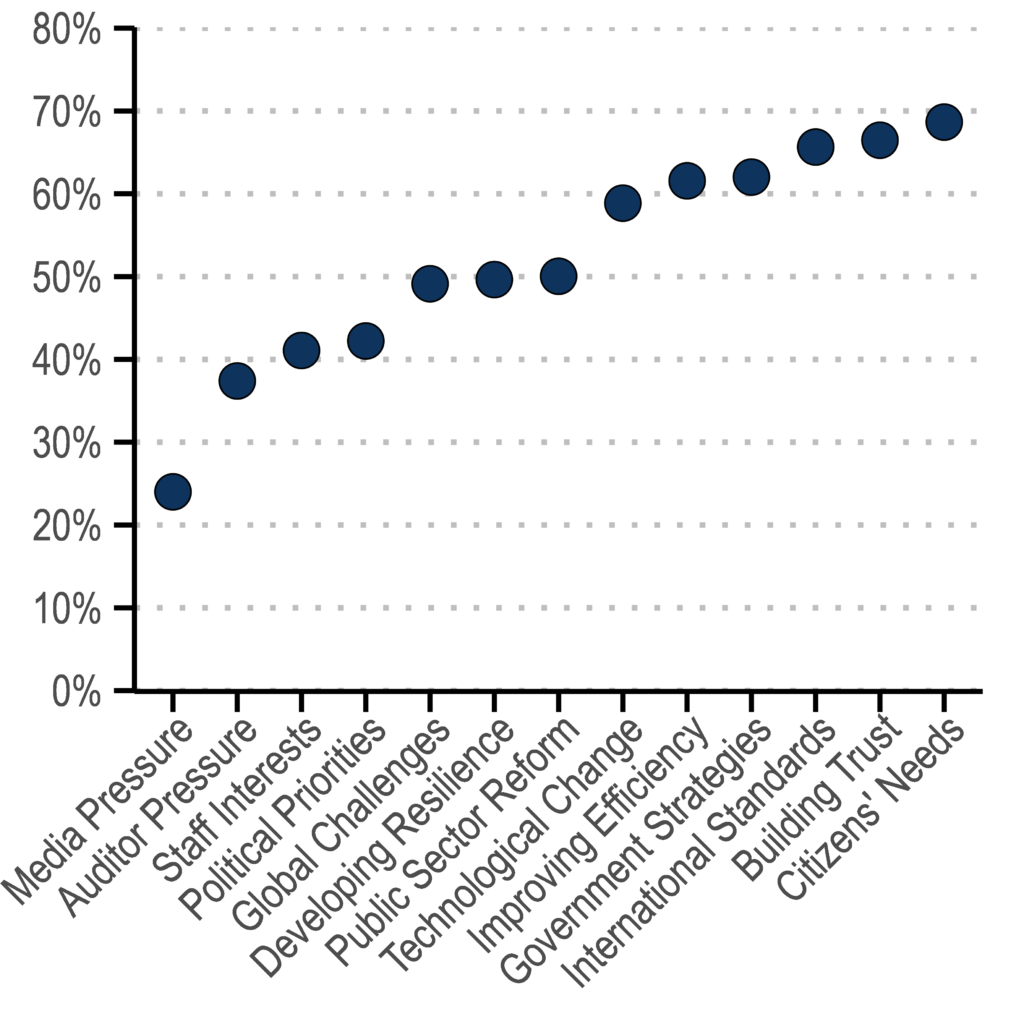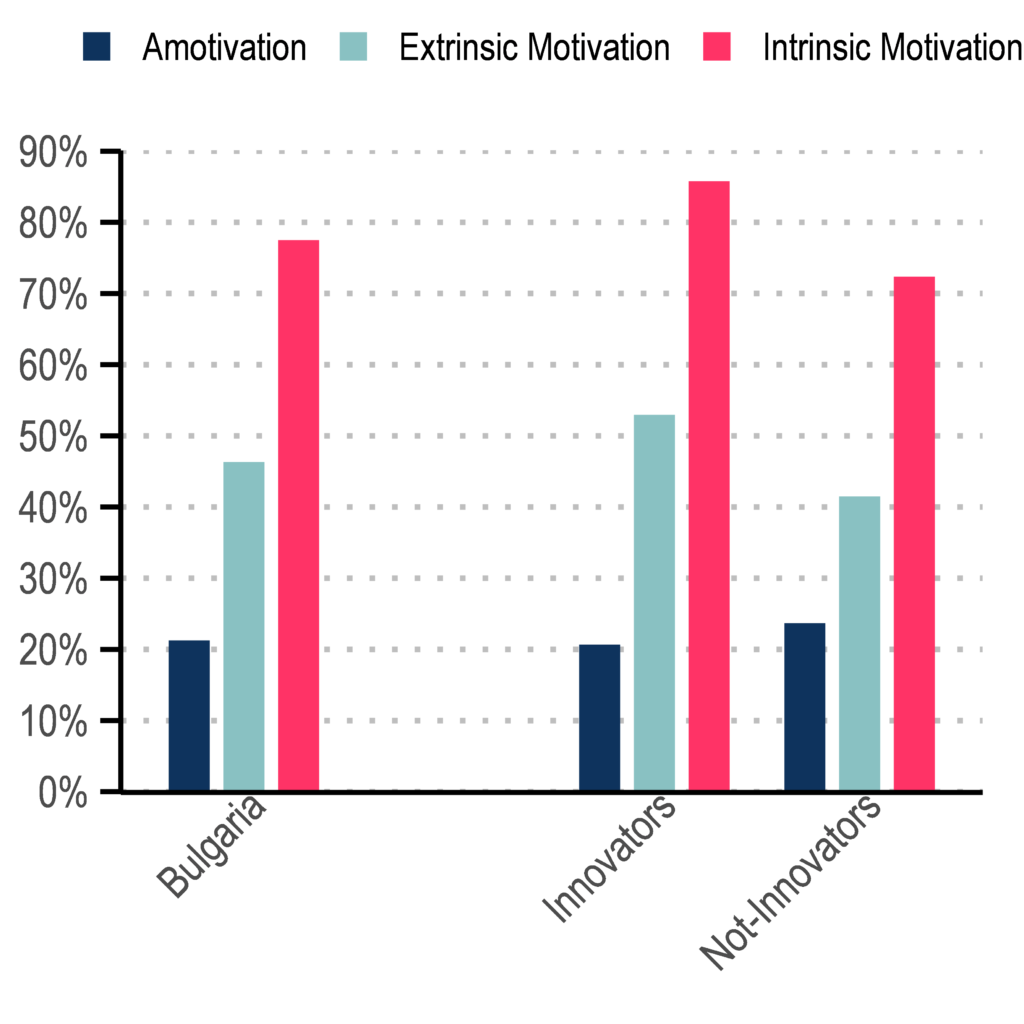Strengthening the Innovative Capacity of the Public Sector of Bulgaria

Bulgaria’s State Administration faces institutional challenges that hinder its ability to implement reforms to spur economic growth and improve living standards. This is further reinforced by low and declining levels of public trust, with only 19% of people expressing confidence in the national government in 2022. Addressing citizens’ needs in innovative ways can improve the public’s satisfaction and trust. The 2024 OECD Survey on Drivers of Trust in Public Institutions shows that increasing the ability of public agencies to adopt new ideas can enhance the government’s responsiveness, ultimately helping to restore trust in public institutions.
Bulgaria has introduced public sector innovations to boost economic development, improve its research system, and digitalise public services. However, while these top-down efforts have contributed to an emerging innovative capacity, they remain fragmented and are not sufficient to address the country’s challenges and accelerate social and economic convergence with more advanced economies.
The State Administration acknowledges the need for greater efforts to expand its innovative capacity. This report highlights opportunities for Bulgaria to promote innovation and create a supportive environment in the public sector.
A view of the Bulgarian public sector’s capacity to innovate
Innovative capacity is emerging, but strategic steering and central co-ordination of public sector innovation are needed
Innovative policies and services, such as the Startup Visa programme for high-tech firms, the unified national administrative register BULSTAT, and the introduction of new service delivery approaches such as “life and business events”, are starting to boost Bulgaria’s emerging innovative capacity.
A survey answered by over 3,700 public servants and heads of organisations in the country showed that a wide range of drivers influence innovative efforts in an unfocused way (Figure 1). Bulgaria lacks a strategic framework and central co-ordination in public sector innovation. This lack of clear priorities and direction could hinder the achievement of the State Administration’s main goals.
Several key government strategies do not include developing innovative capacity as a strategic function or priority.

Actions to consider:
- Develop a vision of how public sector innovation can contribute to the 2030 National Development Programme; and create an action plan and a working group that put forward a co-ordinated approach for implementation.
- Develop the Council of Ministers’ Administration’s role in aligning investments in public sector innovation capacity with government priorities; steering, co-ordinating, and monitoring cross-government innovation implementation; and providing high-level guidance for strategic public sector innovation planning across the administration.
Innovation is carried out at the leadership level, but more support is needed to spread it across all levels of the State Administration
While more than 50% of public servants indicated having participated in an innovation in the State Administration during the last two years, they were predominantly executive and middle managers (Figure 2). This top-down approach could limit the scope and effectiveness of innovation efforts.
Public servants engaged in innovative projects face limited opportunities for internal collaboration and resource constraints, especially due to limited access to digital expertise support and data, and limited digital skills across the Administration.
Explicit institutional support for public sector innovation in Bulgaria exists but is underdeveloped. An innovation network and an annual innovation competition support the widespread adoption of new methods, create practical solutions, and diffuse innovations. However, they suffer from low awareness, limited participation, and a narrow range of activities.

Actions to consider:
- Foster a bottom-up approach to innovation by developing a public administration culture that values and supports innovative efforts. Provide civil servants with the resources, time, training, and internal communications to encourage innovative approaches at all levels of the State Administration, especially less senior staff.
- Consider implementing initiatives such as improving awareness of the public servant mobility programme, supporting innovative procurement procedures, and providing financial incentives to enhance internal collaboration and resource allocation in the State Administration. Target these initiatives with the aim of increasing digital and data skills as part of adopting innovative working methods within the Administration. Improve practices for setting organisations’ innovative priorities and for engaging citizens in innovative projects.
- Establish deliberate support for public sector innovation, including a programme to incubate and scale-up solutions. Upgrade the current innovation network and competition with formal mandates and financial resources to increase their scope and promote innovation more widely. Use these mechanisms to provide dedicated guidance and training for innovation-complementary approaches such as behavioural science and strategic foresight.
Emphasis on funding and evaluation are essential for more transformative innovation
Bulgaria lacks dedicated funding for public sector innovation. Mechanisms such as spending reviews for public sector innovation are limited. As such, current innovations focus mainly on incremental approaches, thereby limiting investment in more transformative opportunities.
The State Administration lacks consistent monitoring and evaluation of public sector innovation. Moreover, there is little communication about public sector innovation results, limiting the visibility of innovative efforts.
Actions to consider:
- Consider creating a cross-government innovation project portfolio, using spending reviews to identify policy options to reallocate funds to high-priority innovation areas, and setting up a central fund for public sector innovation to support more long-term transformative innovation that improves public outcomes.
- Enhance monitoring and evaluation practices by establishing a monitoring and evaluation function within the State Administration, developing a framework for monitoring public sector innovation efforts, and enhancing capacity for evaluation through training and guidance.
- Increase the awareness about innovation results in the public sector by developing a communication plan, setting up a central innovation repository of successful cases, and promoting communication of efforts through a yearly public sector innovation event.
Present innovation skills need to be expanded across all levels of the State Administration
In Bulgaria, there has been limited and sporadic training on public sector innovation. This has been mainly focused on senior staff and concentrated on skills related to advising political leaders (e.g., research and framing policy issues, developing policy solutions). Consequently, only 27% of public servants have the skills to manage and apply innovation processes (Figure 3).
The generalised lack of specific applied innovation skills, such as prototyping and iterating, or specific competencies, such as innovation procurement, further limit the development of innovative projects.

Action to consider:
- Expand current State Administration training offer in innovation to encompass all levels and functions across the civil service. Establish “learning by doing” cross-government capacity-building programmes that combine skills for applied innovation, digital and data, and citizen participation, with different durations and scopes.
Motivation to innovate exists, but a workforce strategy and incentives are necessary for widespread innovation
Public servants, and particularly less senior staff, reported generally low levels of permission to innovate. Only 32% of public servants perceive recognition for innovative work or autonomy to seek new ways of working (Figure 4).
Bulgaria lacks a workforce strategy, as its previous 2014-2020 Public Administration Development Strategy has not been updated. Formal mechanisms such as competency frameworks and performance management assessments do not integrate public sector innovation. As such, the main incentive for innovating is public servants’ intrinsic motivation (e.g., personal satisfaction, sense of accomplishment) (Figure 5).


Actions to consider:
- Update the State Administration’s competency frameworks and performance management guidelines to explicitly include innovation-related incentives, competencies, and behaviours. Support and monitor the implementation of these measures across all human resource management areas and provide complementary training to ensure their effective adoption.
- Update the Administration’s strategic workforce plan and include public sector innovation as central for recruitment and professional development, ultimately, improving the attractiveness of the administration as an employer. This plan should consider formal incentives and reward mechanisms, leadership training and mentorship to improve supportive risk-taking, and safe spaces to practice innovation competencies in the civil service.
From insights to action
Vision and action plan: Towards an innovative, impactful, and trusted State Administration
This report provides a foundation for the development of a public sector innovation vision and action plan for Bulgaria’s State Administration, which aims to build a more innovative, impactful, and trusted State Administration by 2030.
The Council of Ministers’ Administration, along with the support of the OECD and the European Commission, is working on an action plan (2025-2027) that centres around three key pillars aimed at achieving this ambitious vision: strategic steering of public sector innovation, a State Administration designed for change, and a workforce equipped with future-ready skills and incentives.
Several key actions will be considered to overcome the current barriers to innovation and build an Administration that can meet the evolving demands of Bulgarian citizens and increase public trust.
- Pillar 1: Strategic Steering. A strategic and co-ordinated approach for public sector innovation to support the State Administration’s goals and priorities.
- Pillar 2: Designed for change. A conducive environment to widespread innovation where institutional support and resources are optimised to enable incremental and transformative innovation.
- Pillar 3: Skills and people. A civil service fit for the future with the necessary skills, competencies, and incentives to confidently apply innovative methods at all levels.
The report was funded by the European Union via the Technical Support Instrument, and implemented by the OECD, in cooperation with the European Commission.


Strengthening the Innovative Capacity of the Public Sector of Bulgaria
Published: 4 November 2024
